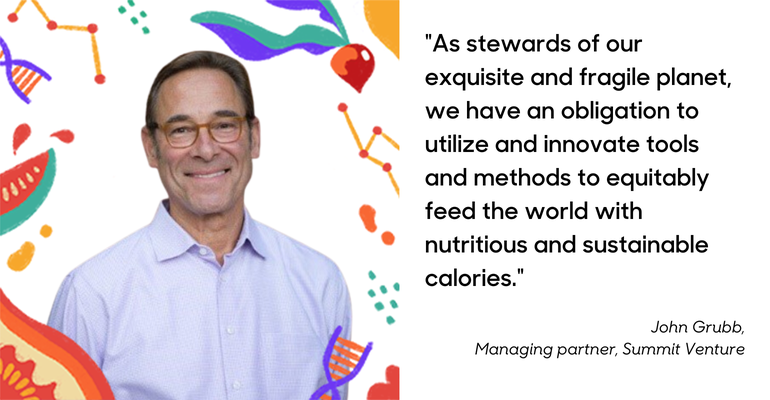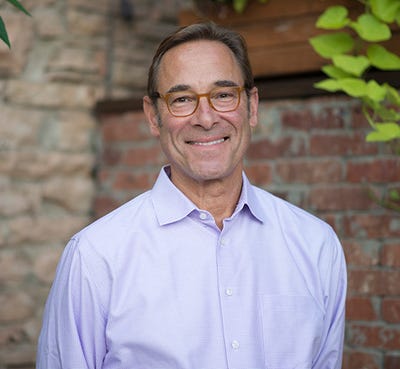The Future of Food: The regenerative imperativeThe Future of Food: The regenerative imperative
Members of the natural foods community are obligated to care for the planet and its people. There's no time to quibble about how to employ new technologies.

New Hope Network encourages its community members to share open and transparent dialogue about issues that are impacting the food industry and its future. Please help us keep this conversation going. If you’re interested in sharing your opinions on the future of food, email Jessica Rubino at [email protected]. All opinions are welcome.
As we face unprecedented challenges related to our warming climate—heat, drought, floods and other extreme weather events—geopolitical uncertainties and food sovereignty issues are also front and center with Ukraine, Russia, China and others. Meanwhile, the United Nations expects population growth to be concentrated in Africa, the continent with the least well-developed agricultural infrastructure.
And in our advanced agricultural systems, we have utilized synthetic inputs as a proxy for soil heath; in so doing, we have arrogantly degraded the soil and demonstrated a very limited awareness of holistic systems that contribute to soil microbiome, plant genetics and epigenetics. Our soil is a massive and essential carbon sink. Its health impacts not only food production and sustainability but also the potential for climate (carbon) mitigation.
We are faced with massive unintended consequences as a result of inputs, contaminants, imbalances and pollution from our bet-the-farm choice to align around corn and soy monocultures.

Food and ag step-function innovation
The agricultural domain in the U.S. is a remarkably productive system that has benefited from a relatively few key innovations in the past 100-plus years:
Large scale industrial mechanization and reliance on cost-effective industrial nitrogen-fixation for fertilizer—around WWI.
Advances in food safety, shelf stability, mass food production and scale economies—around WWII
Genomic coding and modification along with the advent of herbicide tolerant row crops—beginning in the 1990s
And while there have been tremendous productivity benefits, a great deal has been sacrificed in the diversity of our agronomy as well as that of our diet. For example, the nitrogen-fixing capacity of legumes and mycorrhizal fungi have been rather overlooked in favor of "cheap" industrial solutions.
Very bright spots include a concerted organic movement and USDA Organic Certification process (1990), non-GMO initiatives and local and good food movements indicative of the ability to renew and regenerate our food sources—in many cases, re-localizing what has become too centralized. These are all wonderful and essential initiatives that are, in my view, of insufficient scale and growth to match challenges we face. Even if organic food and ag adoption tripled in rate, a sustainable and healthy food and system—along with mitigating climate challenges— now represent engineering problems. We have a regenerative imperative, the success of which will require selective use all of the tools in the shed.
Boundaries of technology
Many of the tools and techniques that accrue to the portfolio of regenerative practices are, even if not widely adopted, relatively without controversy: no/low till, crop rotation and diversity, cover cropping, reducing synthetic inputs. Likewise, many components of precision ag—deeper analytics to inform watering, inputs, pest management, seed selection, etc.—all have benefits that should be clearly demonstrable from a performance, profitability and conservation perspective over a reasonable span of time.
Today, we have new, more nuanced and increasingly precise techniques at our disposal. With decoded genomes and techniques for analytics and up-and-down regulation of genes that drive specific plant traits, there is a whole new realm of assisted breeding. This can include intragenic (internal gene modification) and transgenic (foreign gene modification/insertion). Clearly this is territory for healthy debate and careful consideration where reasonable people can (and do!) disagree about appropriate boundaries.
The realm of controlled-environment agriculture and biosynthetic production has seen an explosion of investment dollars and innovation, be it simple water- and nutrient-saving indoor vertical farming of leafy greens or controlled fermentation of mycelium (mushroom "roots") for sustainable protein and fiber. Then, there are more complex and gene-edited fermentation and biosynthesis platforms to produce desirable and bio-identical sources of meat, dairy and targeted-nutrition compounds.
What boundaries should consumers and producers consider in facing the future of food and ag? In what ways do relatively recent discoveries align with or diverge from the natural selection, genetic mutation and altered phenotypes that have characterized domesticated agriculture for the past 8,000-10,000 years? How should we speak about and regulate standards in these emerging domains? Can we avoid simplistic and knee-jerk reactions to this complex emerging matrix of tools and technologies as applied to our food and ag systems?
The opportunity in front of us
As stewards of our exquisite and fragile planet, we have an obligation to utilize and innovate tools and methods to equitably feed the world with nutritious and sustainable calories. We can and must apply the resources and urgency to match the imperative.
The ancient edict regarding food as medicine has never been more relevant or attainable than with human- and plant-genome mapping. The opportunity is immense, as the mechanistic relationship between nutrients and physiology is increasingly understood. At the same time, the plant kingdom is still minimally understood, relative to huge library of unmapped bio-active compounds.
Stewardship is a holistic imperative. From soil to fungi, plants, animals, humans and climate, we exist along one continuum. There are many potential elements in the generative and regenerative tool kit; an honest and measured survey and discussion of tools, techniques, technologies and standard-of-identity language is certainly in our best interest.
The future of food and agriculture most certainly will employ new and emerging technologies along with tried-and-true legacy standards. We can have a healthy debate, but we do not have time to quibble. Even at net zero emissions, our challenges do not halt, let alone reverse.
John Grubb is the founder of Summit Venture Management and board chair of Naturally Network, a nationwide organization of food brands dedicated to building a more regenerative world. He can be reached at [email protected].
Read more about:
Future of FoodAbout the Author
You May Also Like





